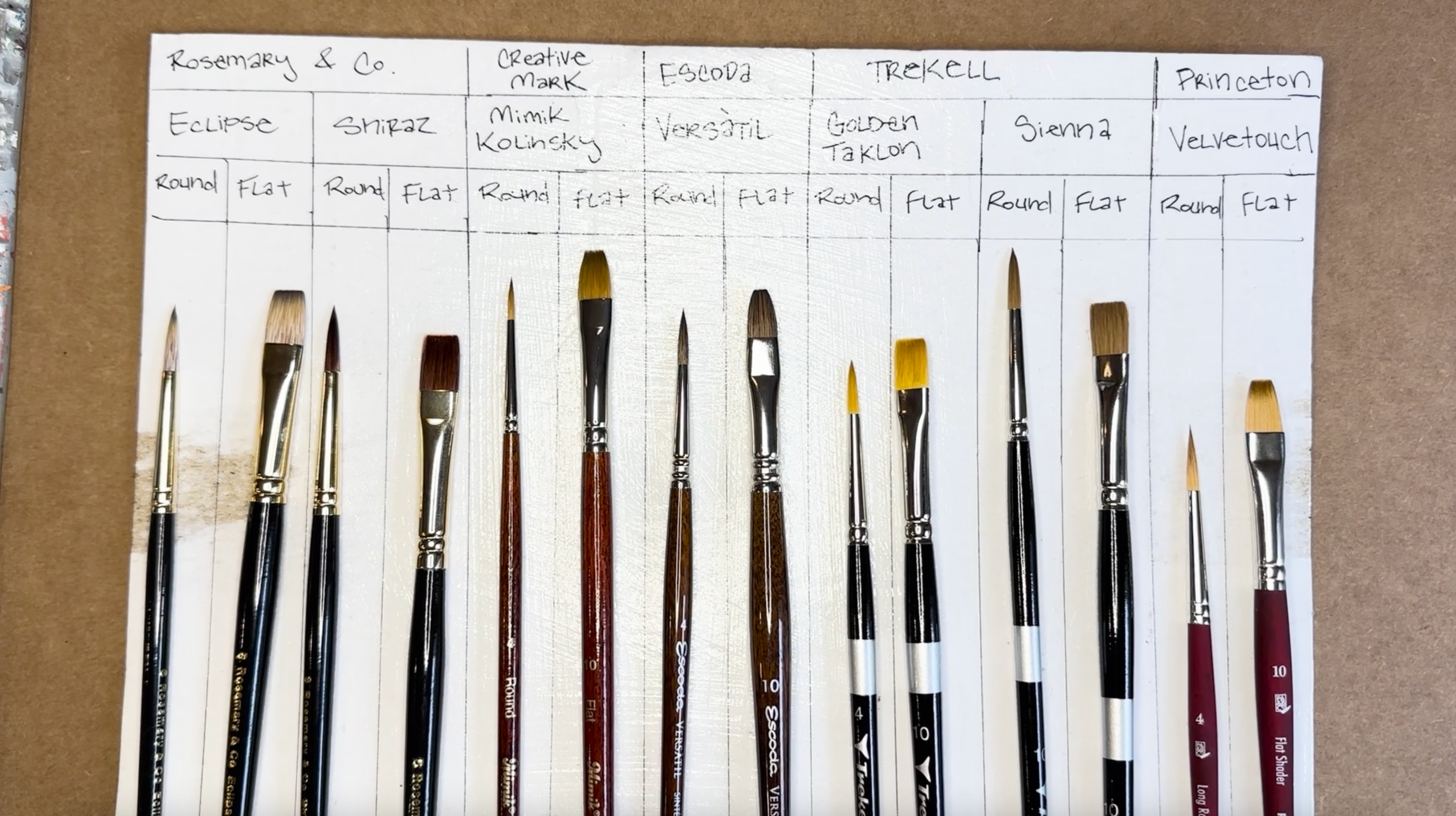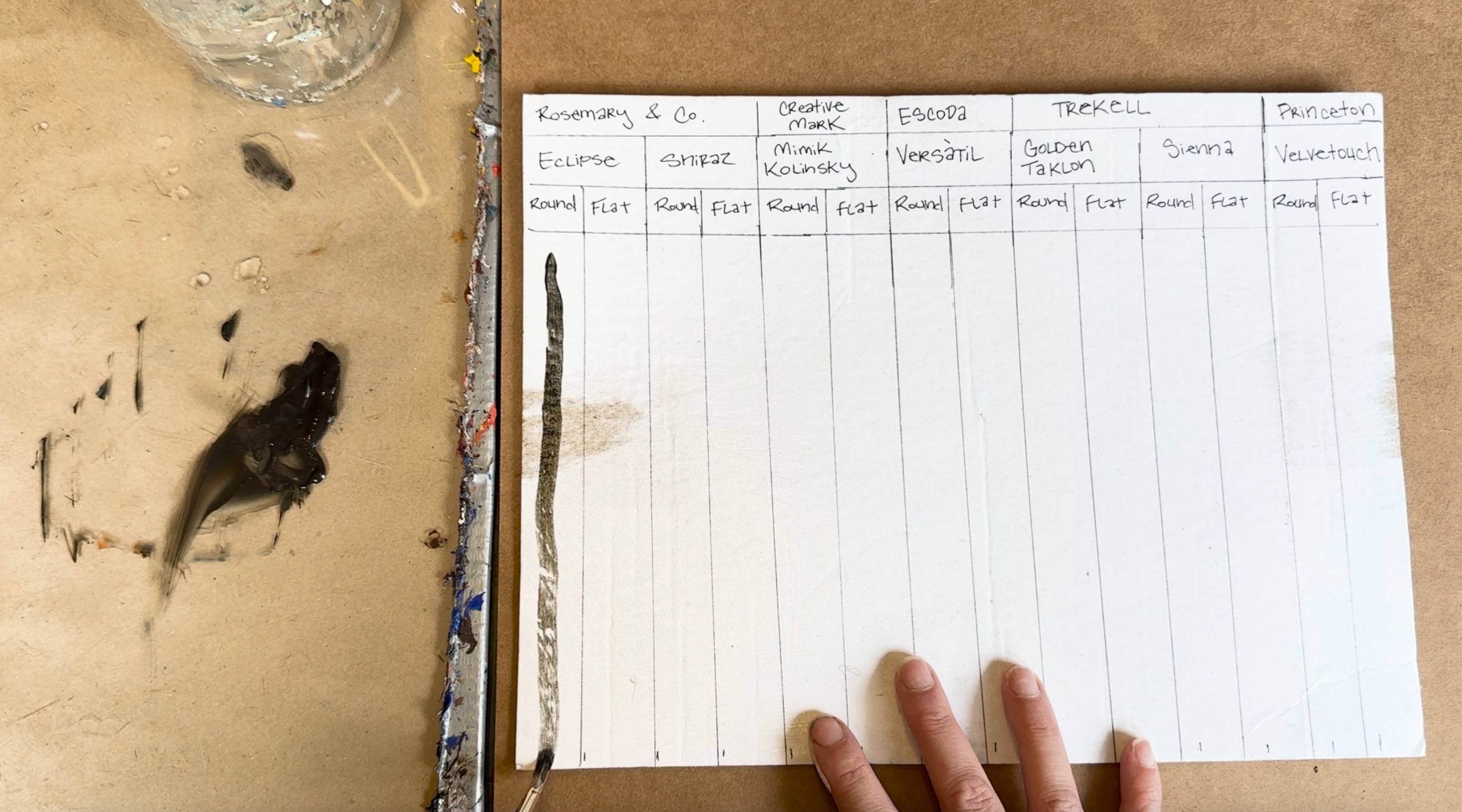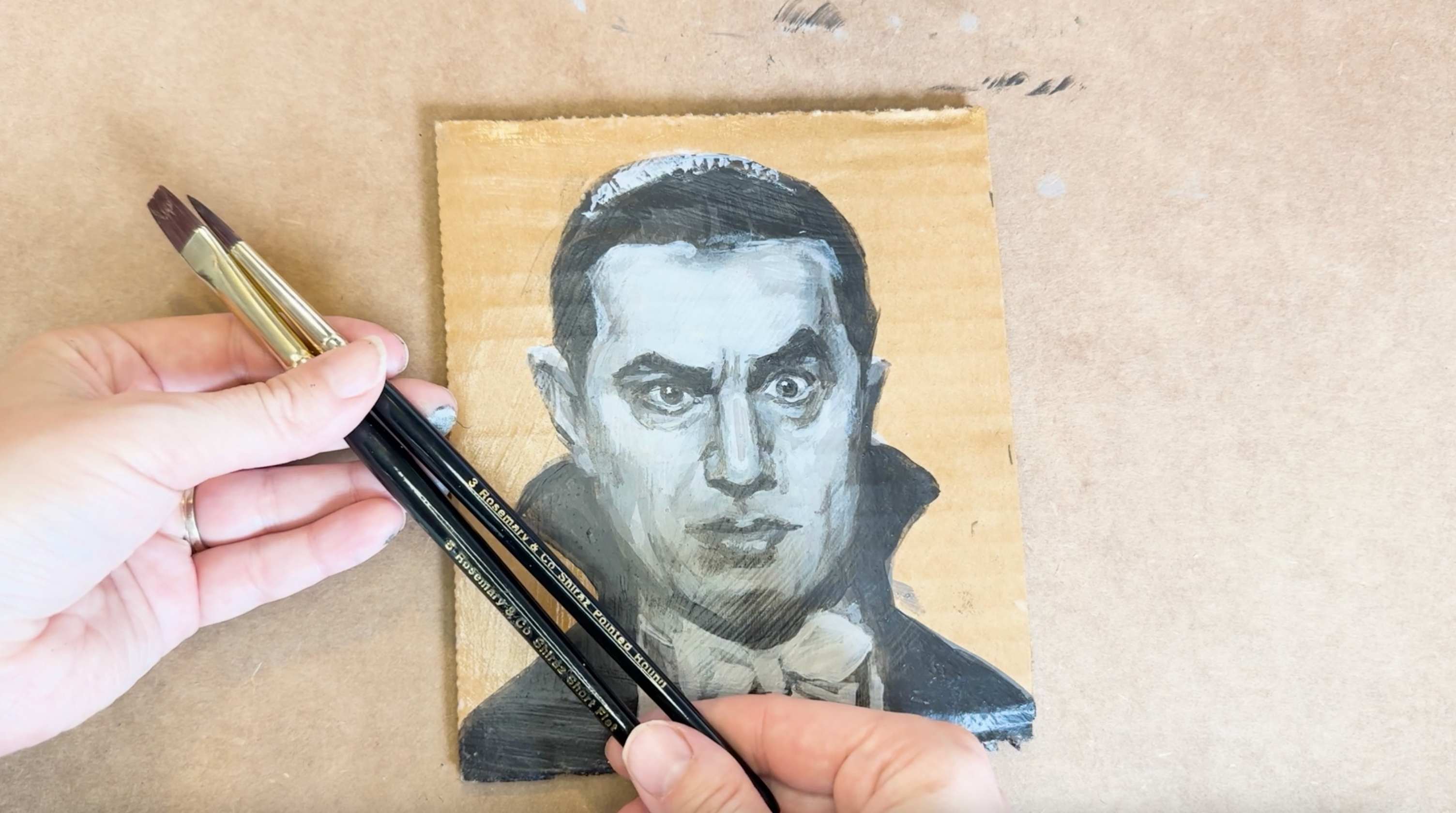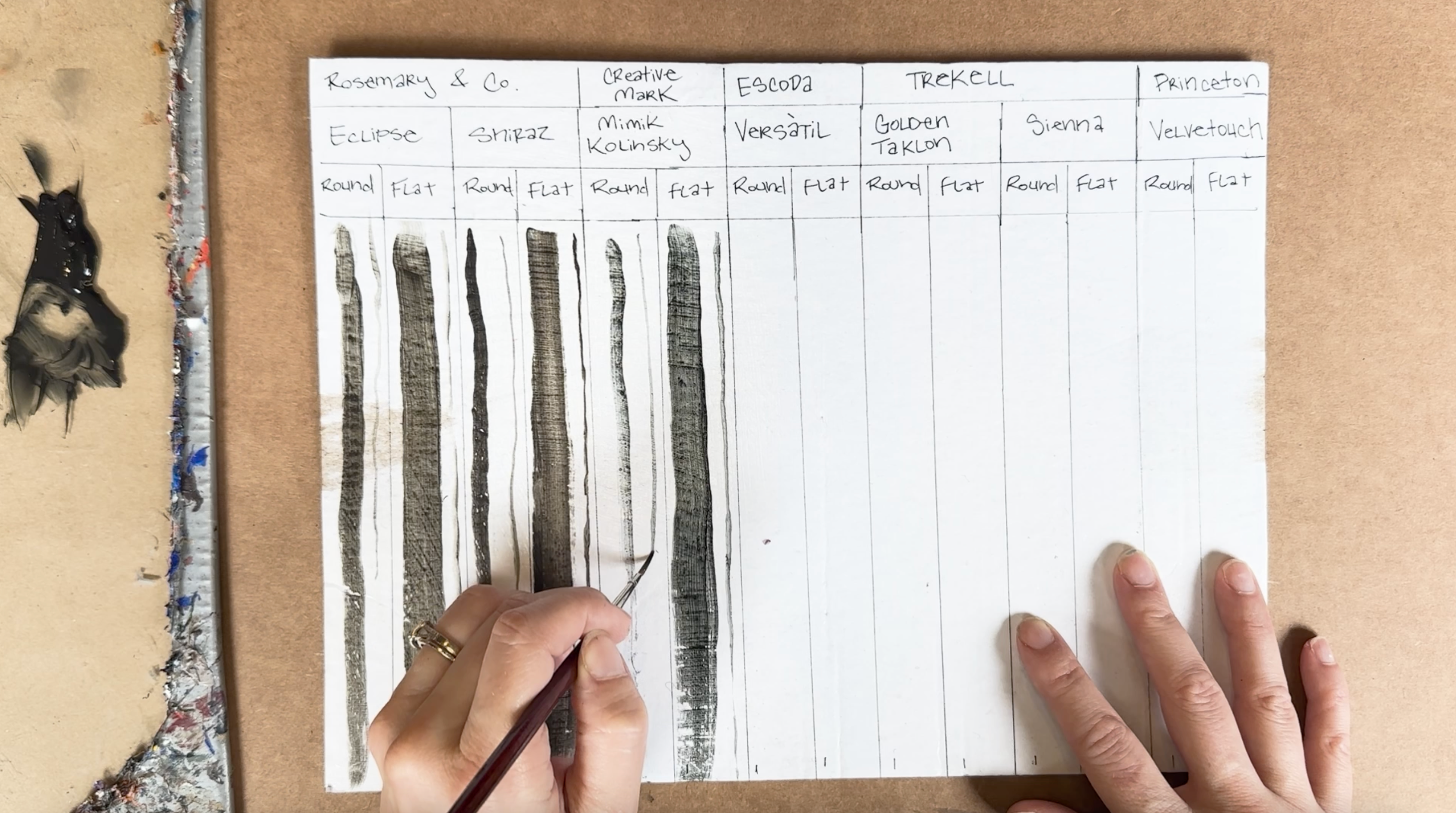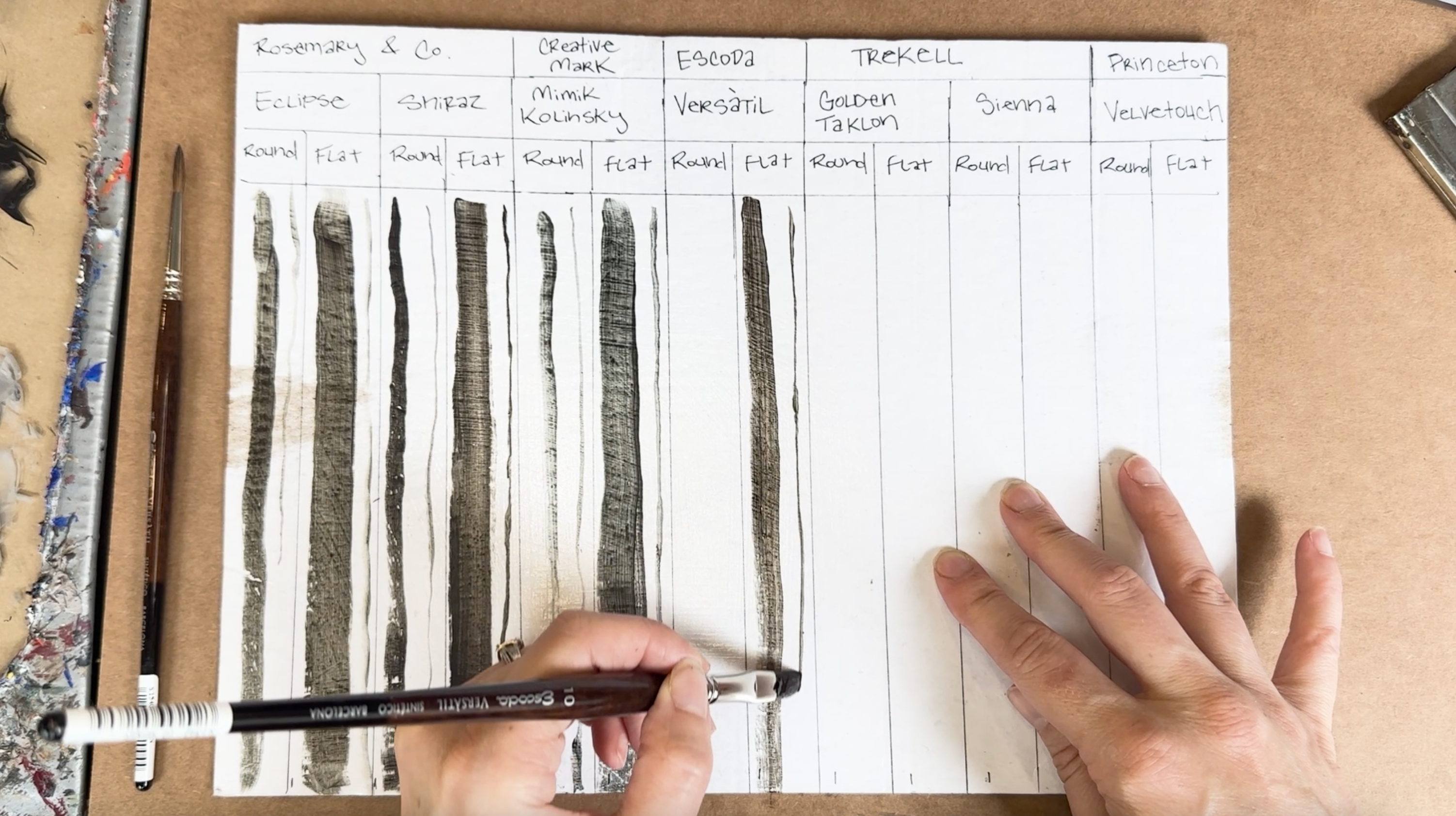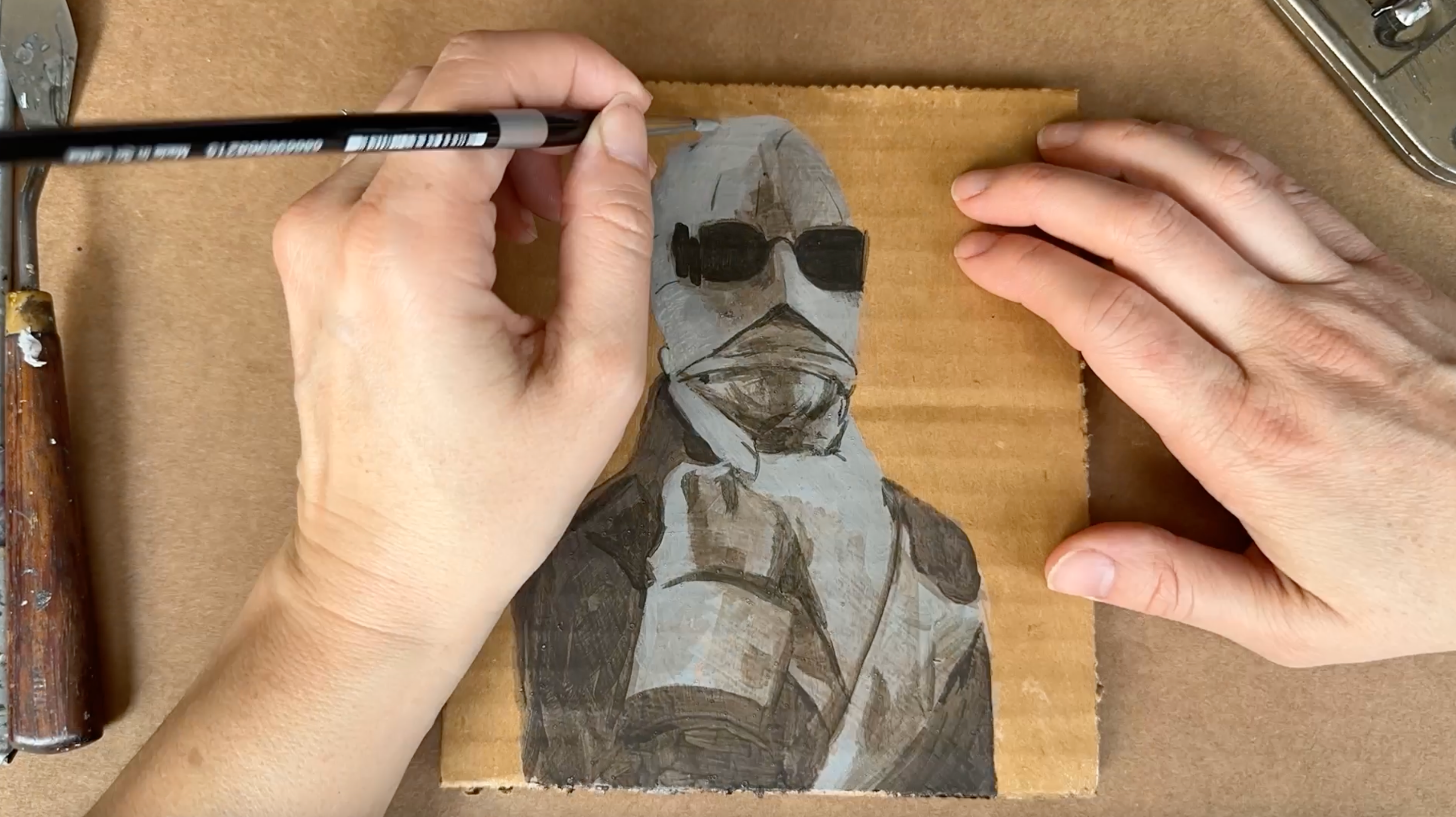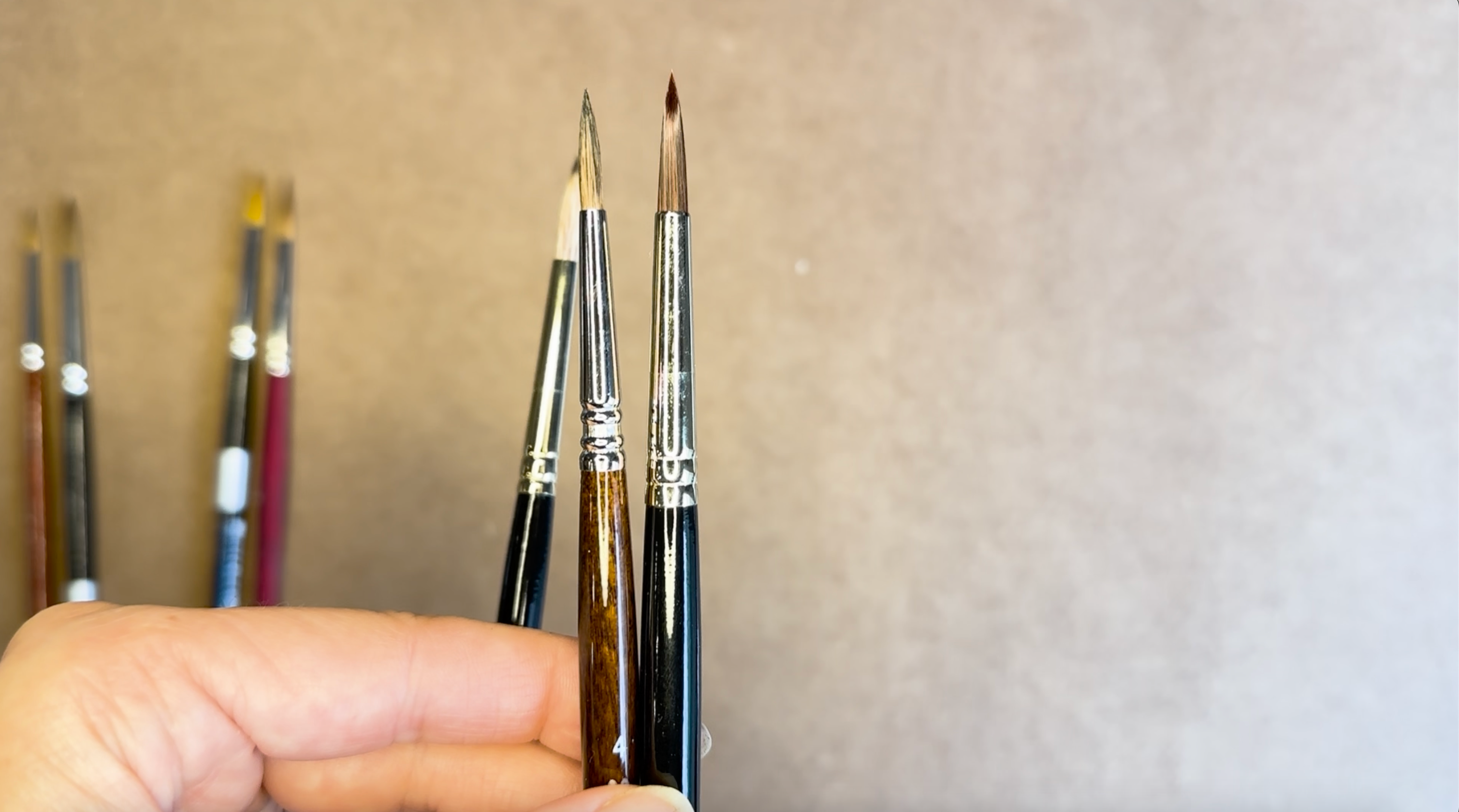The Ultimate Guide to Choosing the Best Synthetic Brushes for Artists
When it comes to creating a beautiful piece of art, the tools you use can make a difference in your experience. While the quality of art supplies won’t define your talent, having the right tools can enhance the painting process, making it more enjoyable, easy and efficient. In this guide, artist Cassandra Kim reviews several synthetic paint brushes from various brands to help artists find their ideal brush for different paint media, like acrylics, oils, and watercolors.
Why Choose Synthetic Brushes?
These brushes have become a go-to option for many artists, especially those who want to provide a cruelty-free alternative to natural hair brushes. Synthetic brushes are typically made from nylon, polyester, or a blend of fibers, designed to mimic the characteristics of natural hair without the cost or ethical concerns.
Additionally, these brushes are generally more durable when used with acrylic paints, as natural hair brushes tend to wear down more quickly in this medium. This added up makes them a popular, easy and cost-effective choice for artists who work with a variety of paints, from oils to watercolors.
Understanding Brush Sizes
One of the key takeaways from Cassandra’s review is that brush sizes, particularly round brushes, vary widely between brands. When ordering, she added, it’s essential to check the millimeter measurements, especially if the width of the brush matters to your work. For example, a size 4 brush in one brand might be the equivalent of a size 6 in another.
Cassandra recommends looking a lot more closely at the millimeter measurements in order to ensure consistency across brands, especially for projects where precision is key.
A Look at the Top Synthetic Brushes
Cassandra Kim tested seven major synthetic brush brands, evaluating both round and flat surface synthetic brushes. Below are the highlights of the results and her findings:
1. Rosemary & Co Eclipse
- Best For: Thick paints like oils and acrylics
- Brush Texture: Coarse, mimicking natural hair with a stiff bristle that adds texture to the artwork.
- Pros: Great for artists who enjoy mark-making with thicker paint.
- Cons: Not ideal for washes or watercolors.
2. Rosemary & Co Shiraz
- Best For: Acrylics and oils
- Brush Texture: Soft bristles with a nice snap, making them versatile for various media.
- Pros: Affordable, durable, and has a great tip for fine details.
- Cons: Higher shipping costs if ordering internationally, but worth it for bulk purchases.
3. Creative Mark Mimik Kolinsky
- Best For: Water-based media like watercolors and gouache
- Brush Texture: Sable-like, offering softness and water-holding capacity.
- Pros: Good for washes; reasonably priced.
- Cons: Less memorable for oil painting.
4. Escoda
- Best For: Watercolors and light acrylics
- Brush Texture: Soft and mimics real hair closely.
- Pros: Feels like a natural hair brush, perfect for fluid mediums.
- Cons: Struggles with thicker paints like oils.
5. Trekell Golden Taklon
- Best For: Blocking in and fine details with acrylics
- Brush Texture: Soft, yet firm enough to hold its shape under heavy use.
- Pros: Affordable, great for both broad strokes and detail work.
- Cons: Round brushes lose shape faster than some higher-end brands.
6. Trekell Sienna
- Best For: All media (watercolor, acrylic, oil)
- Brush Texture: Versatile with smooth strokes and great for multi-media artists.
- Pros: High-quality brush that works across different paints.
- Cons: Higher price, but not significantly better than other moderately priced options.
7. Princeton Velvetouch
- Best For: All-around use, especially acrylics
- Brush Texture: Firm, holds its shape well, even with frequent use.
- Pros: Extremely durable, affordable, and a go-to for Cassandra.
- Cons: No significant downsides, except personal preference.
What to Look for in Synthetic Paint Brushes
When choosing brushes, here are a few key factors to keep in mind:
- Bristle Type: Stiffer bristles like those in Rosemary & Co Eclipse are great for thicker paints, while softer bristles, such as those in Creative Mark Mimic Kolinsky, excel in water-based media.
- Versatility: Some brushes, like Trekell Sienna, can handle multiple media types, which is a great investment for mixed-media artists.
- Durability: Synthetic brushes tend to last longer, especially when used with acrylics and properly cleaned after each use.
Are Expensive Brushes Worth It?
While more expensive brushes like the Escoda or Trekell Sienna performed well, Cassandra emphasized that the difference in quality between moderately priced synthetic brushes and more expensive ones wasn’t as significant as expected. You don’t need to spend a fortune to get high-performing brushes. Moderately priced options like Princeton Velvetouch and Trekell Golden Taklon held up just as well, if not a lot better, in some cases.
Care Tips for Your Brushes
Taking care of your synthetic paint brushes will extend their life significantly:
- Clean your brushes after every use using soap and water or a specialized brush cleaner.
- Store brushes properly, ensuring that they aren’t resting on their bristles, which can cause them to lose shape.
- Use a brush holder to keep the bristles from fraying and help them maintain their form.
Note: finding the best brush comes down to personal preference, technique and the type of medium you typically use. From Cassandra’s review, Trekell Golden Taklon emerged as her top pick, with the previous synthetic brushes by Rosemary & Co Shiraz and Princeton Velvetouch maintaing a clean, close edge.
If you’re looking to switch to synthetic or upgrade your current collection, consider what’s most important for your painting technique and style. Whether you prioritize surface texture, versatility, or price, there’s a perfect synthetic painting brush out there for you.
Courses Now Enrolling
Illustration & Fine Arts students gain access to all guest artist events.

